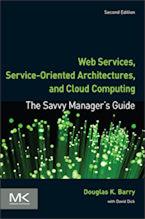Atomicity
The phrase "all or nothing" succinctly describes the first ACID property of atomicity. When an update occurs to a database, either all or none of the update becomes available to anyone beyond the user or application performing the update. This update to the database is called a transaction and it either commits or aborts. This means that only a fragment of the update cannot be placed into the database, should a problem occur with either the hardware or the software involved. Features to consider for atomicity:
- a transaction is a unit of operation - either all the transaction's actions are completed or none are
- atomicity is maintained in the presence of deadlocks
- atomicity is maintained in the presence of database software failures
- atomicity is maintained in the presence of application software failures
- atomicity is maintained in the presence of CPU failures
- atomicity is maintained in the presence of disk failures
- atomicity can be turned off at the system level
- atomicity can be turned off at the session level
Context for Atomicity
Related Articles for Atomicity
The Savvy Manager's Guide
Douglas K Barry is also the author of a book that explains Web Services, service-oriented architecture, and Cloud Computing in an easy-to-understand, non-technical manner.
Web Services, Service-Oriented Architectures, and Cloud Computing: The Savvy Manager's Guide (Second Edition)
by Douglas K Barry with David Dick
This is a guide for the savvy manager who wants to capitalize on the wave of change that is occurring with Web Services, service-oriented architecture, and—more recently—Cloud Computing. The changes wrought by these technologies will require both a basic grasp of the technologies and an effective way to deal with how these changes will affect the people who build and use the systems in our organizations. This book covers both issues. Managers at all levels of all organizations must be aware of both the changes that we are now seeing and ways to deal with issues created by those changes.

